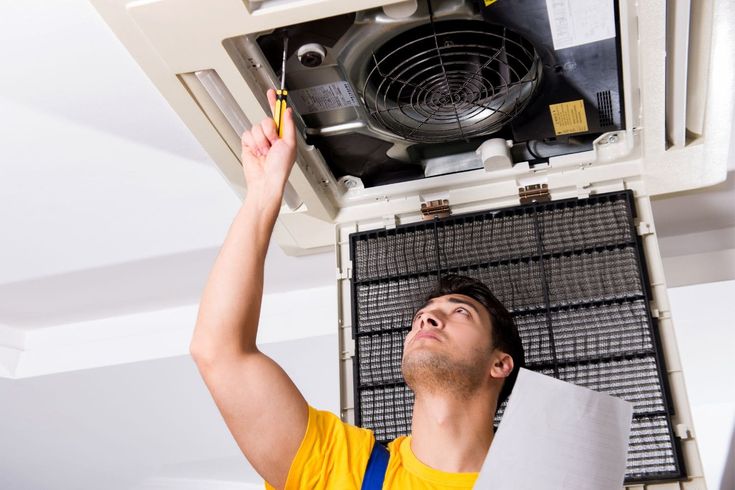
Air conditioning (AC) systems rely on refrigerants to facilitate the cooling process, making them an essential component of HVAC systems. The type of refrigerant used in an air conditioning system significantly affects its efficiency, performance, environmental impact, and longevity. Over the years, various refrigerants have been developed, with some being phased out due to their negative effects on the environment. Understanding the role of different refrigerants can help consumers, technicians, and businesses make informed decisions about AC systems.
What Is a Refrigerant?
A refrigerant is a chemical compound that absorbs heat from indoor spaces and releases it outside, enabling the cooling process in air conditioning systems. Refrigerants operate by changing states between liquid and gas within the AC unit’s components, such as the evaporator and condenser. The efficiency and environmental footprint of an AC system largely depend on the type of refrigerant used.
Common Types of Refrigerants and Their Impact
1. Chlorofluorocarbons (CFCs) – R-12
CFC refrigerants, such as R-12, were widely used in air conditioning systems in the past. However, they have been largely phased out due to their high ozone depletion potential (ODP) and significant contribution to global warming. The impact of CFCs on AC systems included:
- High efficiency in cooling but severe environmental consequences.
- Expensive maintenance and retrofitting costs for systems still using CFCs.
- Legal restrictions and phase-out programs due to their impact on the ozone layer.
2. Hydrochlorofluorocarbons (HCFCs) – R-22
R-22, also known as Freon, was the next generation of refrigerants used in air conditioning systems. While it was less harmful to the ozone layer than CFCs, it still had a significant ODP and global warming potential (GWP). The impact of R-22 refrigerants included:
- Reliable performance in AC systems but declining availability due to environmental regulations.
- Higher costs as production decreased, making maintenance more expensive.
- The need for system retrofitting or replacement with more eco-friendly alternatives.
3. Hydrofluorocarbons (HFCs) – R-410A, R-134a
HFC refrigerants, such as R-410A and R-134a, were introduced as environmentally friendly alternatives to CFCs and HCFCs. These refrigerants have zero ozone depletion potential but still contribute to global warming. Their impact on air conditioning systems includes:
- Improved energy efficiency and cooling performance.
- Higher operating pressures requiring specialized AC components.
- Regulatory scrutiny due to high global warming potential, leading to future phase-outs.
4. Hydrofluoroolefins (HFOs) – R-1234yf, R-1234ze
HFO refrigerants represent the latest innovation in the HVAC industry, designed to reduce environmental impact further. These refrigerants have a low global warming potential and zero ozone depletion potential. Their impact includes:
- Greater environmental sustainability with reduced greenhouse gas emissions.
- Compatibility with newer AC systems but challenges with retrofitting older units.
- Higher initial costs but long-term energy savings.

5. Natural Refrigerants – CO2 (R-744), Ammonia (R-717), and Propane (R-290)
Natural refrigerants, such as CO2, ammonia, and propane, are gaining popularity due to their minimal environmental impact. Their impact on AC systems includes:
- Exceptional energy efficiency and low environmental impact.
- Special safety considerations due to flammability (propane) or toxicity (ammonia).
- Increasing adoption in commercial and industrial cooling applications.
Factors Influencing Refrigerant Choice
1. Environmental Regulations
Governments worldwide impose regulations on refrigerants to minimize their impact on climate change. AC systems must comply with regulations such as the Montreal Protocol and the Kigali Amendment, which promote the use of eco-friendly refrigerants.
2. Energy Efficiency
The type of refrigerant affects an AC system’s energy consumption. HFOs and natural refrigerants typically provide higher energy efficiency, reducing electricity bills and carbon footprints.
3. Cost Considerations
Refrigerant choice impacts the upfront cost of AC systems and long-term maintenance expenses. Newer refrigerants may have higher initial costs but offer better efficiency and lower operating expenses over time.
4. System Compatibility
Older AC units may not be compatible with newer refrigerants without retrofitting. When upgrading refrigerants, users must consider whether the existing system can handle the operating pressures and temperature ranges of the new refrigerant.

The Future of Refrigerants in Air Conditioning Systems
The air conditioning industry is moving toward greener refrigerants with lower environmental impact. Innovations in refrigerant technology aim to balance performance, cost, and sustainability. Future trends include:
- Increased use of HFOs to reduce global warming impact.
- Greater adoption of natural refrigerants in commercial and residential applications.
- Development of next-generation refrigerants with minimal environmental footprint and improved energy efficiency.
Conclusion
The type of refrigerant used in an air conditioning system has a profound impact on performance, cost, and environmental sustainability. With regulatory changes and advancements in technology, the HVAC industry is shifting toward eco-friendly refrigerants. Understanding the differences between refrigerants helps consumers and businesses make informed decisions about AC systems, ensuring optimal efficiency and compliance with environmental standards. As technology advances, the future of air conditioning will be shaped by sustainable refrigerant choices that provide effective cooling with minimal ecological impact.


